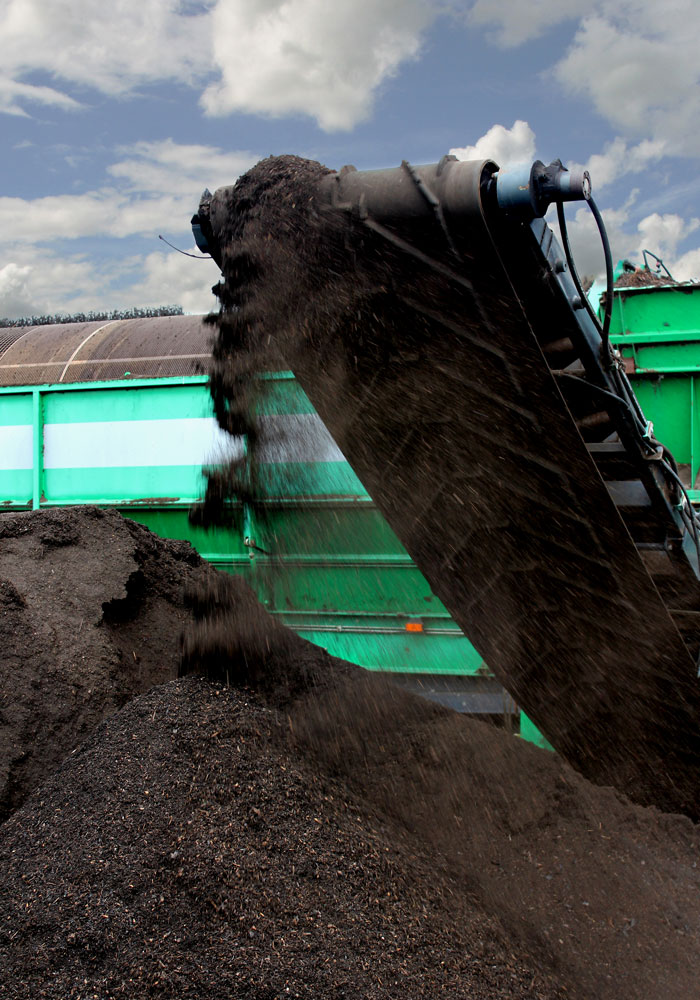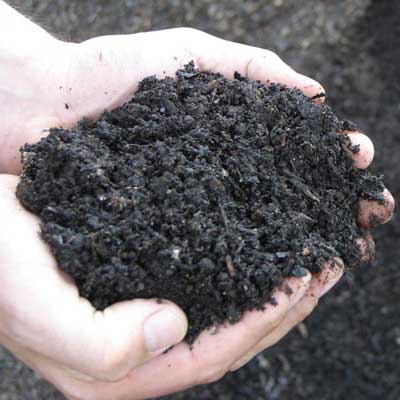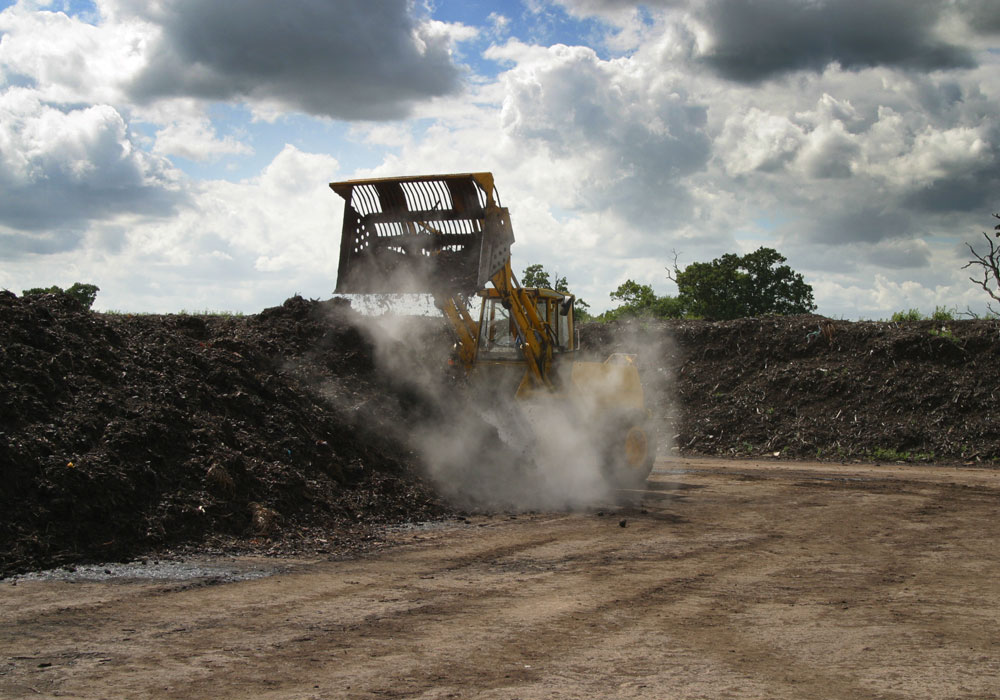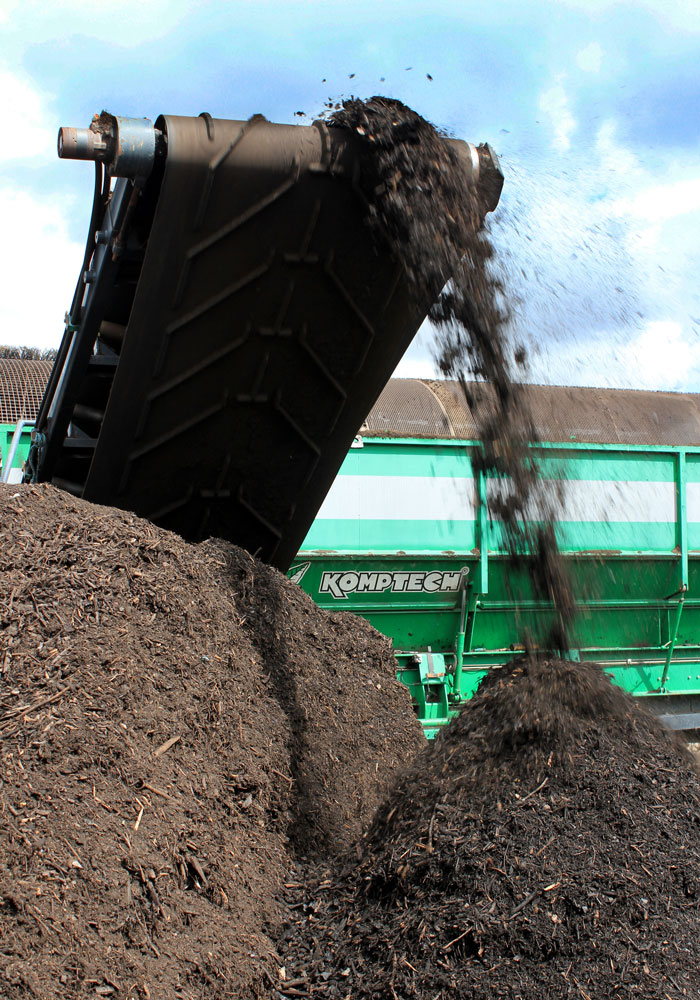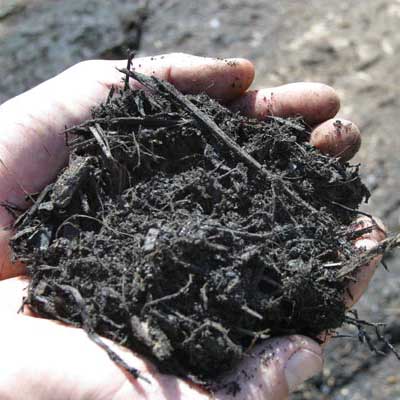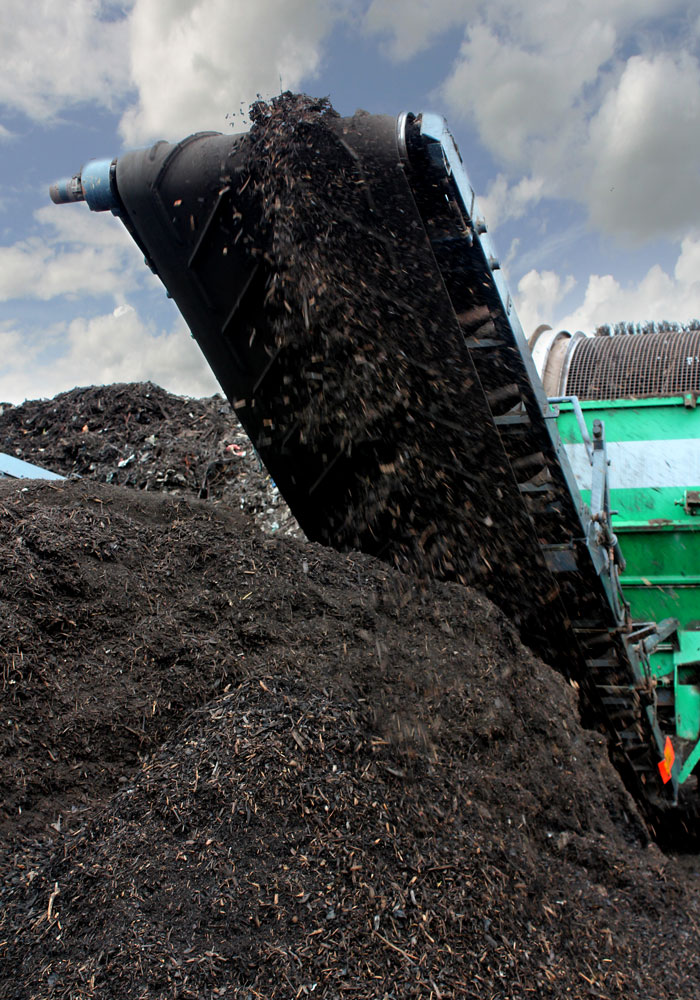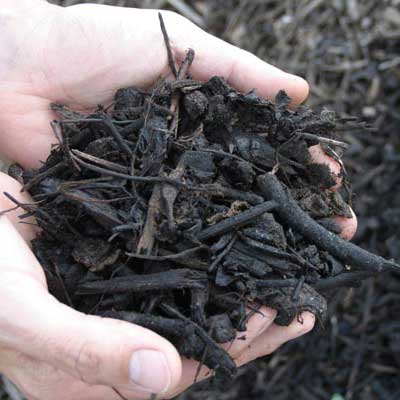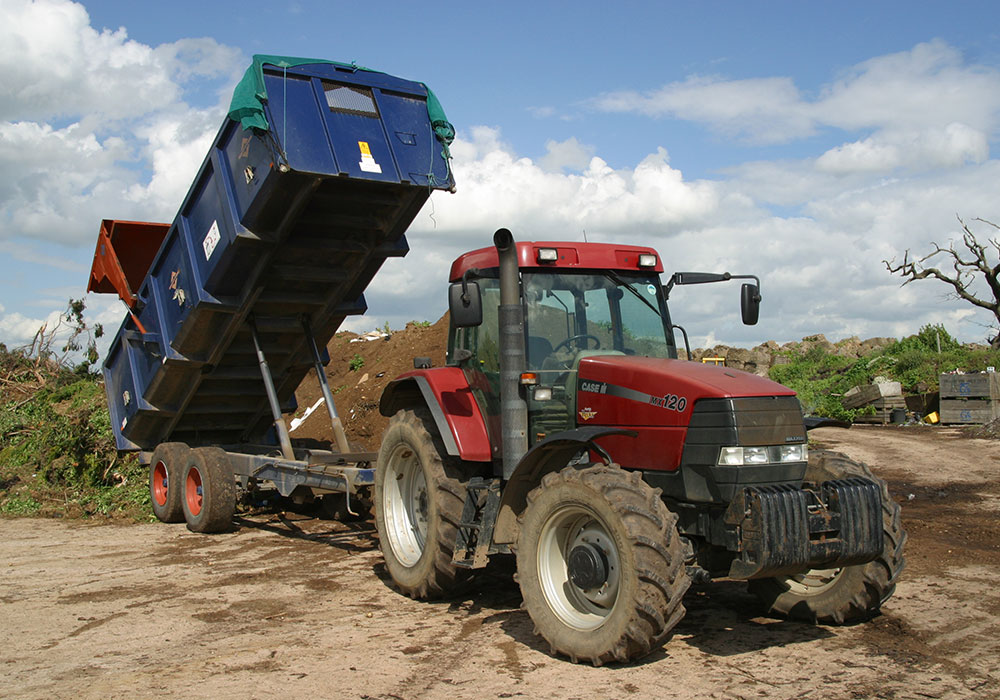
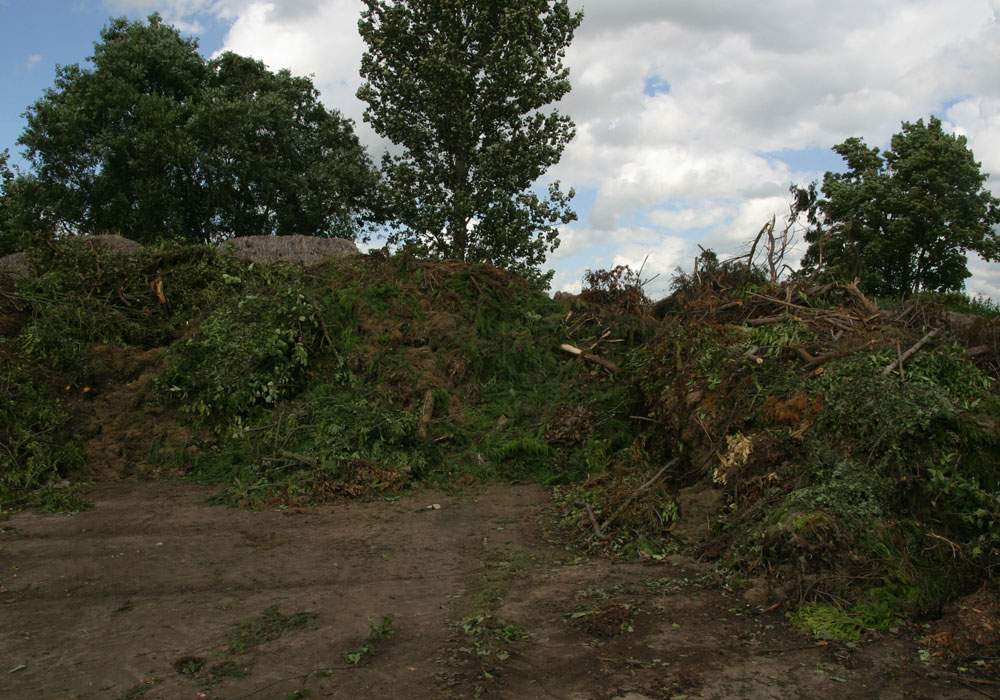
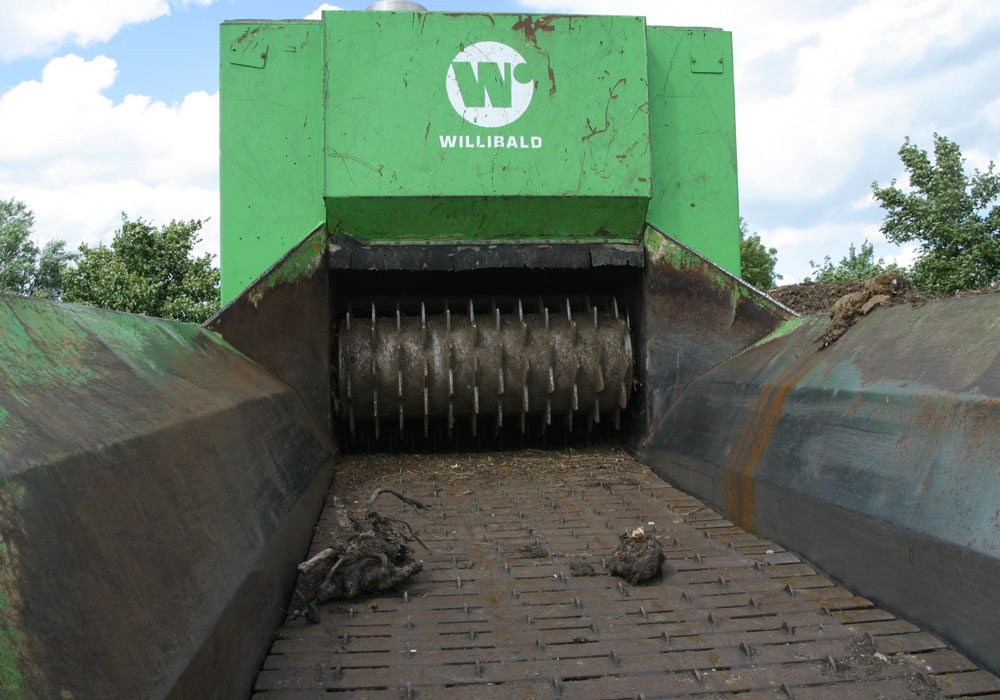
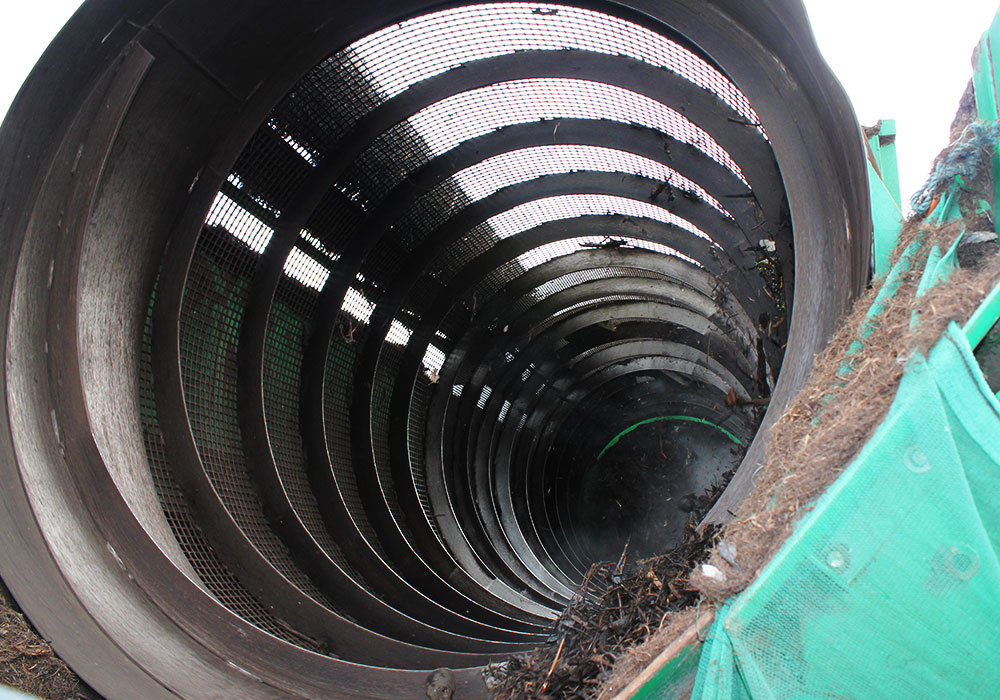
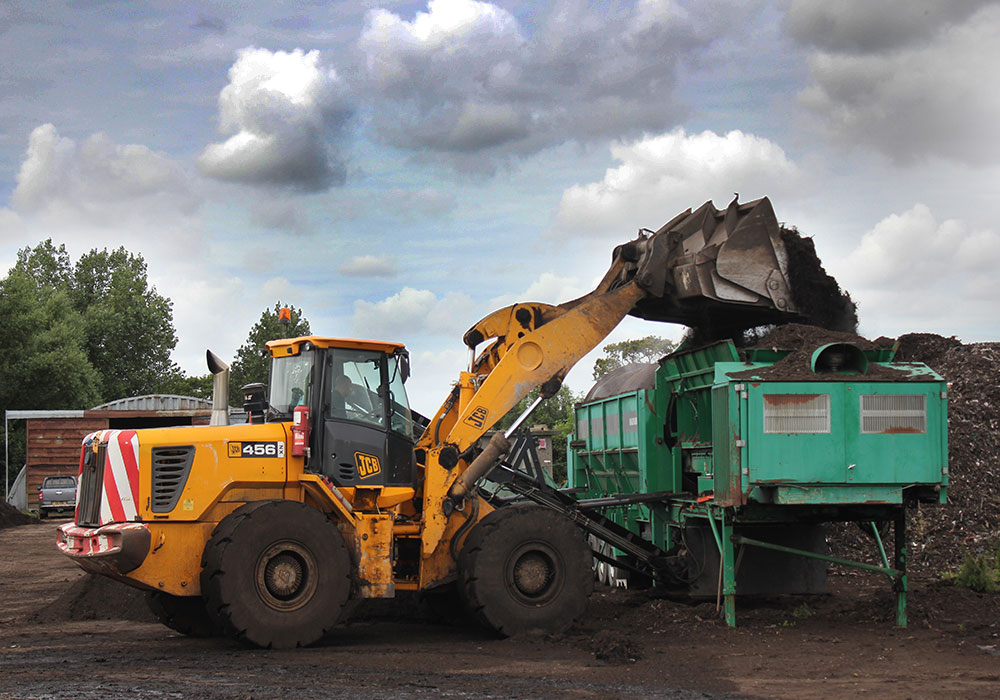
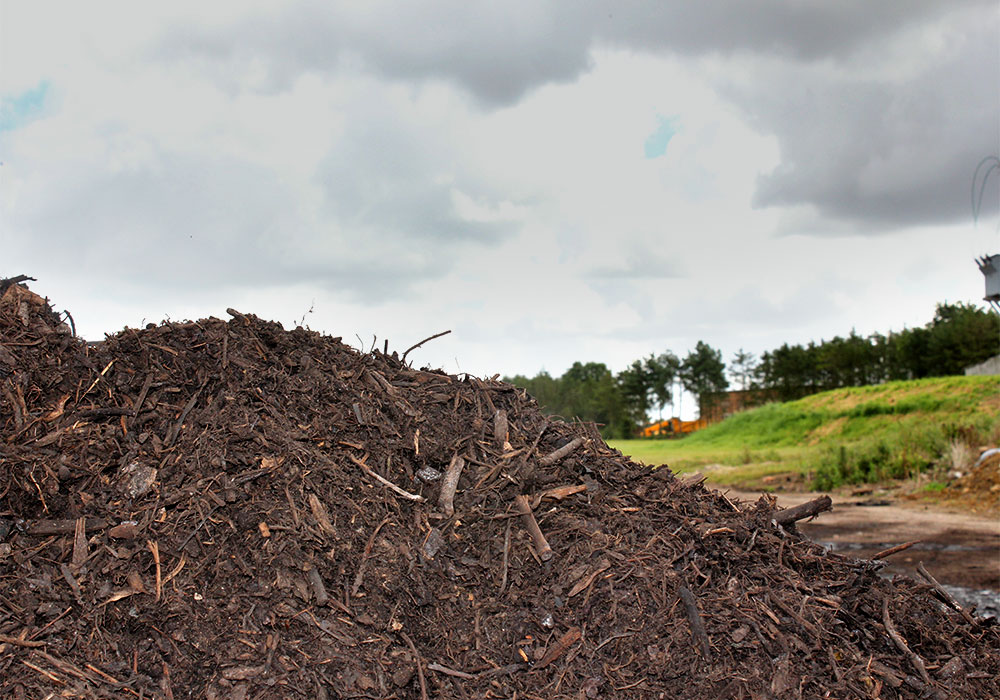
A key feature of organic farming systems is the utilization of organic residues as soil mulches and amendments in an integrated system to maintain and improve soil quality. Organic residues used for these purposes may be produced on the farm, or they may be imported from off-farm sources.
Often, fresh organic residues produced in place are used in these practices, such as when cover crops are plowed down as a green manure to build soil organic matter and improve soil fertility, or rolled as a mulch in organic no-till systems to suppress weeds, reduce soil erosion, and conserve soil moisture.
Organic residues may also be processed before being used to attain desirable qualities, such as when animal manures are composted to reduce volume and improve stability. Regardless of the circumstances, organic residues that are handled incorrectly can introduce otherwise avoidable problems to the farming system.
For example, raw cattle manure may contain viable weed seeds and may spread an otherwise isolated weed infestation more broadly across the farm or, if the manure is imported from outside the farm, introduce a weed problem that previously didn’t exist.
Similarly, plant residues may be infected with pathogens that can infest subsequent crops. This article provides a brief description of the composting process, discusses the use of composting to reduce weed seeds and plant pathogens, and identifies issues that can lead to the failure of composting to reduce weed seeds and plant pathogens.
What is composting?
For the purposes of organic certification, the National Organic Program rule (United States Department of Agriculture [USDA], 2000) defines compost as:
“The product of a managed process through which microorganisms break down plant and animal materials into more available forms suitable for application to the soil. Compost must be produced through a process that combines plant and animal materials with an initial C:N ratio of between 25:1 and 40:1.
Producers using an in-vessel or static aerated pile system must maintain the composting materials at a temperature between 131 °F and 170 °F for 3 days. Producers using a windrow system must maintain the composting materials at a temperature between 131 °F and 170 °F for 15 days, during which time, the materials must be turned a minimum of five times.”
–7 C.F.R. § 205.2 (2000)
Composting is the controlled management of the normal biological process of aerobic (in the presence of oxygen) decomposition of organic residues by microorganisms such as bacteria, fungi, and actinomycetes. This process is optimized when the various organic residues are mixed to provide certain conditions:
• A balance of energy (carbon, C) and nutrients (primarily nitrogen, N), with an initial C:N ratio of between 25:1 and 40:1
• Sufficient—but not excessive—moisture (typically 40–60% by weight)
• Sufficient oxygen to support an aerobic environment (typically 5% or more)
• A pH in the range of 6–8
Under these conditions, populations of microorganisms will thrive and organic residues will be decomposed, consuming oxygen and releasing intermediate breakdown products, carbon dioxide, and heat. As the temperature of the pile rises, the community of microorganisms will go through a succession, culminating in thermophilic (heat-loving) organisms at temperatures above 113 °F (45 °C). If the mass of the compost pile is large enough to be self-insulating, temperatures within the pile during this active phase of composting may reach 131–170 °F (~55–70 °C) within 1–3 days.
To maintain biological activity and to bring the active phase to completion, temperatures should be monitored and compost moisture and aeration should be maintained. After the most readily decomposable organic matter in the compost is consumed, biological activity will decrease in intensity, and temperatures and oxygen consumption will decline. The compost then enters the curing phase, during which decomposition proceeds more slowly and organic matter is converted to stable humic substances—the finished or mature compost.
How does composting reduce weed seeds?
Several factors contribute to weed seed mortality during composting. In compost systems assembled and managed in accordance with requirements for organic certification, the most important factors are the interaction between weed species, temperature, time, and moisture.
In general, the higher the temperature to which weed seeds are exposed during the active phase of composting, the higher the weed seed mortality. Similarly, the longer the duration of high-temperature exposure, the higher the weed seed mortality.
Six weed species examined under controlled laboratory conditions were unaffected by temperatures of 108 °F, but 90% of the seeds of all six species were killed after less than three hours at 140 °F (Table 1). Furthermore, all six species suffered 100% mortality after less than an hour at 158 °F.
Similarly, in Texas, Weise et al. (1998) found that, in composting manure at 35% moisture, barnyardgrass, pigweeds, and kochia seeds were killed after three days at 120 °F; Johnsongrass seed was killed with three or more days of exposure at 160 °F; but field bindweed seeds were killed only after seven days at 180 °F.
| Estimation of number of hours required to kill 90% of a weeds seeds after adding compost | ||||
| Temperature (°F) | ||||
| Temperature (°F) | 140 | 122 | 115 | 108 |
| Average time required to kill 90% of seeds (hours) | ||||
| Annual sowthistle | <1.0 | 2.1 | 13.3 | 46.5 |
| Barnyardgrass | <1.0 | 5.4 | 12.6 | unaffected |
| London Rocket | <1.0 | 4.0 | 21.4 | 83.1 |
| Common Purslane | 1.3 | 18.8 | unaffected | unaffected |
| Black Nightshade | 2.9 | 62.0 | 196.6 | 340.6 |
| Tumble Pigweed | 1.1 | 107.0 | 268.5 | unaffected |
Susceptibility of weed seeds to thermal mortality, however, is influenced by the moisture content of the compost; weed seeds in a dry environment are able to survive higher temperatures for longer times than seeds in a moist environment. Some have suggested that thermal mortality may be greatest for fully imbibed seeds—seeds that have absorbed water and split their seed coat in the process of germination.
Water added to compost greatly enhanced weed seed destruction; moist compost was faster and more effective at killing cocklebur, morningglory, pigweed, sunflower, velvetleaf, foxtail, smooth brome, and shattercane than dry compost, in part due to higher compost temperatures.
Other factors are thought to contribute to weed seed mortality during composting. Larney and Blackshaw (2003) observed considerable variability in the relationship between temperature exposure in windrows and seed viability for a number of weeds, and concluded that additional factors, such as germination into lethal conditions or pathogen infestation, were contributing to weed seed mortality.
Others have implicated plant-toxic compounds that accumulate to sufficiently high concentrations during composting (phenols, ammonium, and acetic acid, for example) in weed seed mortality and suppression of germination.
What can go wrong!
In general, adherence to a composting process that meets the requirements of organic certification should result in substantial—if not complete—destruction of weed seeds and plant pathogens. Incomplete composting, on the other hand, can result in the survival of weed seeds and/or plant pathogens.
Improperly assembled and maintained piles or windrows may not reach high enough temperatures during the active phase of composting for killing all weed seeds and pathogens. Failure to reach adequate temperatures can have several causes:
• Too high a C:N ratio of initial ingredients, too little water, or too little oxygen can inhibit the rate of decomposition, and thus the production of heat.
• Too much water can starve the pile of oxygen and result in anaerobic decomposition.
• Accumulation of toxic products may inhibit fungal and microbial activity, thus slowing the rate of decomposition.
• Too small a pile or windrow may loose heat too quickly to reach adequate temperatures, whereas too large a pile may have inadequate aeration to support aerobic decomposition.
To avoid these problems, assemble raw materials carefully to achieve the proper starting conditions of C:N, moisture, pile porosity, and size; monitor temperature and moisture conditions; and turn/aerate as needed to maintain a biologically active, aerobic environment. Excellent resources providing detailed instructions and guidelines for composting include The Art and Science of Composting (Cooperband, 2002), Composting on Organic Farms (Baldwin and Greenfield, 2009), and On-Farm Composting Handbook (Rynk, 1992).
Temperatures at the edges and surface of compost piles and windrows may not be sufficient to kill weed seeds and pathogens. This is an especially important risk in static piles that are not turned and mixed during the active phase of decomposition, but rely on forced aeration to maintain an aerobic environment. Thorough mixing or turning during the active phase is essential to ensure that all the material achieves elevated temperatures for a long enough period of time to kill weed seeds and pathogens.
Dry heat is less effective than moist heat at killing weed seeds. Ensure that moisture content of the pile or windrow is maintained at 40–60%.
Contamination with soil or uncomposted residues, especially after the active phase of composting has finished, can lead to the reintroduction of weed seeds or plant pathogens. Avoid adding fresh material after the active phase.
Finished compost can become recontaminated with weed seeds if weeds are allowed to grow and go to seed on or adjacent to the pile or windrow. Similarly, compost can become contaminated with vegetative reproductive structures from some weeds if they are allowed to grow on or adjacent to the pile.
Keep vegetation adjacent to stored compost mowed short, and tarp piles or windrows to prevent contamination by wind-blown weed seeds. When moving or spreading finished compost, avoid picking up soil or other contaminants from under or around the pile or windrow.
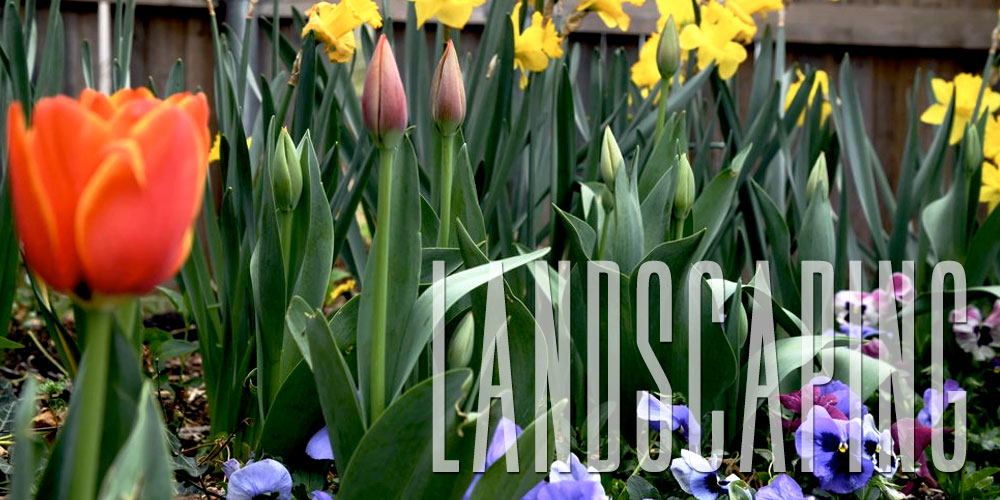
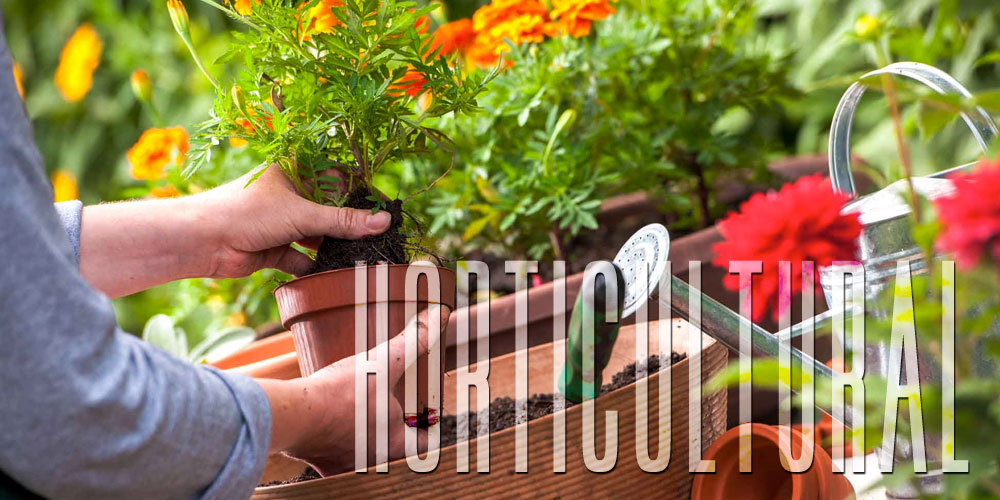
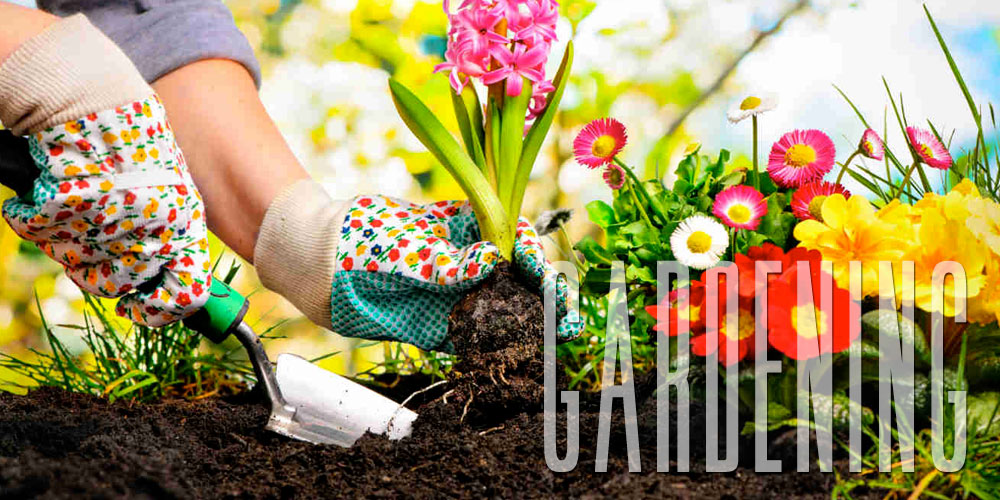
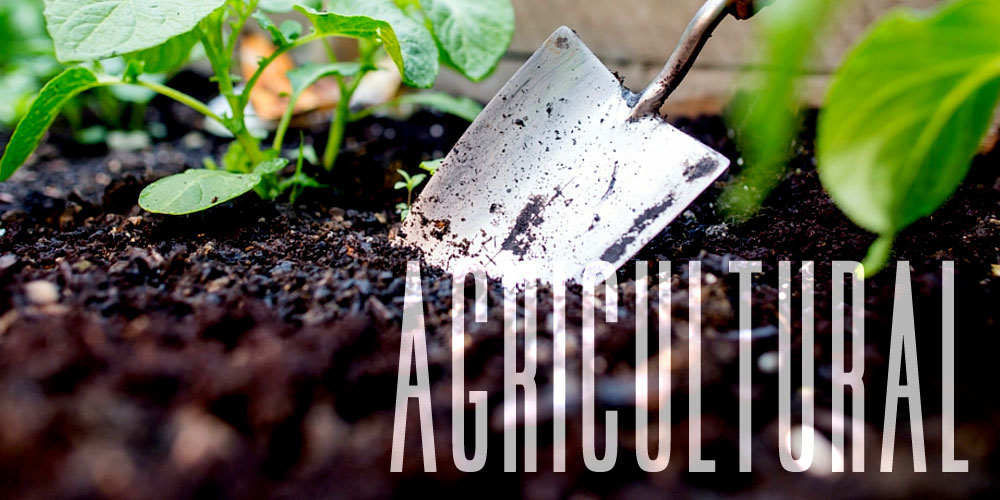
What Can be composted...?
Composting has the potential to manage all of the organic material in the waste stream which cannot otherwise be recycled. Some examples of organic material that can be composted include food scraps, leaves and yard wastes, agricultural crop residues, paper products, sewage sludge and wood.
Can composting manage all our wastes...?
Since approximately 50% of the waste stream is organic matter, composting can play an important role in the integrated waste management plans of any community. However, the remainder of the waste stream (such as items made of plastic, glass, metals, ceramics and rubber) cannot be composted.
Is composting compatible with other waste management systems...?
Yes. Composting should be part of a comprehensive waste management system that emphasizes source reduction, reuse, composting and recycling, and proper disposal of any residual material. Some materials (such as paper products) can be recycled or composted.
While paper can be composted, clean paper is generally more valuable when recycled. Soiled paper or paper that cannot be recycled economically can be composted.
What are the benefits of a successful composting program...?
In addition to diverting a large proportion of the waste stream away from disposal an effective composting program can produce a high quality soil amendment with a variety of end uses.
Diverting organic wastes from landfill sites helps to conserve landfill space and to reduce the production of leachate and methane gas (both of which add to the cost of operating a landfill).
Is composting new...?
No. Agricultural wastes have been composted forever. Large scale composting of other organic wastes, including municipal sewage sludge, has been a component of some municipal waste management programs since the 1950s.
How long does the composting process take?
A number of factors are important in controlling the composting process and the time that the process takes. These factors include temperature, moisture, oxygen, particle size, the carbon-to-nitrogen ratio of the waste and the degree of mixing or turning involved.
In general, the more actively these factors are controlled, the faster the process. The length of the process also depends on the degree of decomposition desired in the finished product. Typically, an immature compost can be produced in about a month, while a mature compost may be allowed to cure for six months to a year.
What is the best location for a backyard composter?
The composter should be placed in a well drained area and where it is convenient to use. It should be placed where it can get as much sun as possible as the microbiological activity will be high. If the unit is placed in the shade, the activity is reduced and the process takes longer.
Can you compost in the winter?
Yes, you can compost year-round. As the temperature falls, microbial activity decreases but it starts up again as soon as the weather warms up. To make room for your winter organics, empty the finished compost from your unit in the fall. You may also want to move the unit to a more accessible location for the winter.
Also, organics can be collected in a covered container stored just outside the back door. In the spring, the collected organics can be added to your composter. Kitchen wastes are high in nitrogen so you need to add lots of leaves or something rich in carbon to be sure that you have the right carbon-to-nitrogen ratio needed for the microorganisms to be most effective.
Are there different types of composting processes...?
There are three basic types of centralized composting processes or methods.
Vessel Method: Organic material is composted inside a drum, silo, agitated bed, covered or open channel, batch container or other structure. The process conditions are closely monitored and controlled and the material is aerated and mechanically turned or agitated.
Aerated Static Pile Method: This involves forming compostable materials into large piles, which are aerated by drawing air through the pile or forcing air out through the pile. The pile is not turned.
Windrow Method: Compostable material is formed into elongated piles, known as windrows, which are turned mechanically on a regular basis
Are special additives required...?
In some cases, such as in the composting of grass clippings, the raw material may be too dense to allow for the proper flow of air or maybe too moist.
A common solution to this problem is to add a bulking agent, such as wood chips, to provide structure to material and to allow for proper airflow. The amount of bulking agent required is usually determined based on experience.
Some facilities add commercial fertilizers to their composting process, but this can usually be avoided by combining different waste streams together in a specific “recipe”. Inoculating the material with microbes is not normally required, since most wastes naturally contain the microbes needed for successful composting to occur.
Does composting cause odours or attract rodents?
Any waste management facility, including a composting site, has the potential to generate offensive odours or to attract pests. However, experience at hundreds of composting facilities has shown that proper design and operational procedures can prevent or control these problems.
Excessive or offensive odours are generally a sign that the composting process is not proceeding properly, usually because of inadequate aeration or excessive moisture. Close monitoring of these factors can usually help to minimize odours.
Facilities can employ abatement systems, such as biofilters, to treat occasional odours . Preventing odours and ensuring that the site is kept clean will ensure that the site does not attract rodents or other pests.
Does composting pose a health risk to workers or to those located near a facility?
Some people have expressed a concern that certain microbes present at composting facilities and the compounds they produce, may become airborne and endanger the health of site workers and those located downwind of a composting facility.
Studies of concentrations of fungal spores and other airborne materials at and near composting sites show that concentrations are higher around some composting operations, such as turning and screening, and the levels drop to background levels within a short distance.
While airborne concentrations of fungal spores and other microbes at composting sites are higher than background levels, studies of long time compost site workers show no negative health effects. Wherever decaying organic matter is present, certain microbes occur naturally. Spores of the fungus Aspergillus fumigatus are commonly cited as a source of concern.
Aspergillus fumigatus is one of the most widely distributed microorganisms on earth is known to exist in almost every interior and exterior environment. People are routinely exposed to low levels (and occasionally high levels) of Aspergillus fumigatus without consequence.
The conclusion reached by health and environmental agencies in the US and Europe is that normal, healthy individuals suffer no increased health risk by either working at, or living near, a compost facility. However, some individuals may be more sensitive to microbes at a composting facility (because of a reduced resistance resulting from drugs or disease). These individuals should not work at composting facilities
What is the cost of a composting facility? How does composting compare to other waste management activities?
Unfortunately, there is no simple answer to this question – in part, because of the wide variety of local circumstances that influence the cost of waste management. An accurate estimate of the cost of a composting facility requires detailed knowledge of project specific criteria such as location, site conditions, waste composition, facility size and level of technology.
The cost of collecting and composting organic wastes should be evaluated as a component of an integrated system of waste management since increased diversion through composting will result in lower costs for collection and disposal of garbage.
How much space is required?
Unfortunately, there is no simple answer to this question – in part, because of the wide variety of local circumstances that influence the cost of waste management. An accurate estimate of the cost of a composting facility requires detailed knowledge of project specific criteria such as location, site conditions, waste composition, facility size and level of technology.
The cost of collecting and composting organic wastes should be evaluated as a component of an integrated system of waste management since increased diversion through composting will result in lower costs for collection and disposal of garbage.
What is the best way to collect organic wastes...?
This question continues to generate considerable debate, despite growing experience with the collection of organic wastes. Determining the “best” method in any circumstance will require trade offs between the conflicting objectives of low cost collection and low cost processing.
For example, the use of plastic bags may lower collection costs, but may increase the cost of processing to remove unwanted plastic. Conversely, the use of curbside collection containers makes processing easier, but requires more capital expenditure for collection equipment.
What makes a good quality compost?
Exactly what makes a good quality compost is usually best determined by the requirements of the end user of the material. However, there are a number of important criteria which are normally used to judge compost quality.
Among these are maturity, organic matter content, the presence of physical contaminants (such as glass, metal or plastic), pH, particle size, nutrient content, moisture content and trace element content..
